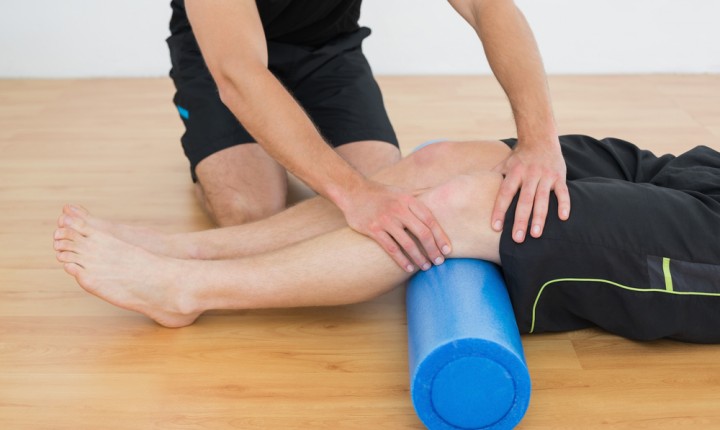One of the most common overuse, repetitive use injuries I see in practice are with the iliotibial band, also known as an IT band. Anyone who is active can become subject to this common overuse injury. How do we prevent IT band overuse? A few things to keep in mind:
- Know your limitations. Do not push yourself repeatedly over your limit or try to keep up with someone else.
- Use proper warm up and cooling down procedures, and make sure you are using the appropriate equipment. I usually recommend a foam roll.
A foam roll is a dense cylindrical piece of foam usually 6 to 8 inches in diameter and about 2 to 3 feet long. Foam rolls can be purchased in almost all sporting good stores for around $25 to $30.
Now that you are familiar with the foam roll, let’s get familiar with the anatomy of the iliotibial band.
Your iliotibial band originates from your pelvic region, where it is meshed together with a muscle called your tensor fascia latae and even part of your gluteus maximus. From your outer hip region, your iliotibial band travels down the outside part of your thigh and inserts into the top of your shin bone. If you palpate the side of your thigh right above your knee joint, you can locate a tight band of tissue that is much larger than a typical tendon and more firm than a well developed muscle—this is part of your iliotibial band.
 To help promote iliotibial health and reduce repetitive use and overuse injuries, you should consider using a foam roll. Since the iliotibial band is usually quite tender to pressure, I typically start my patients with a foam roll on two soft yoga mats to ease the pressure from the foam roll on the iliotibial band and it surrounding musculature.
To help promote iliotibial health and reduce repetitive use and overuse injuries, you should consider using a foam roll. Since the iliotibial band is usually quite tender to pressure, I typically start my patients with a foam roll on two soft yoga mats to ease the pressure from the foam roll on the iliotibial band and it surrounding musculature.
Notice Illustration no.4
Click on image to enlarge
Start by lying on your side, support your body weight with your legs and arms, and lie with a foam roller under the upper, outside portion of your thigh—this is the proximal portion of your iliotibial band.
Use your legs and arms to roll the length of your iliotibial band along the roll, traveling right down to just above your knee joint. As you get closer to your knee, you may feel more tenderness, so be prepared to use your arms and legs to ease pressure off of your iliotibial band.
Roll back toward the upper portion of your iliotibial band and continue back and forth in this fashion for a few passes.
Maintain steady breathing, and feel free to linger and increase pressure whenever you come to points that are especially taut or tender. These are commonly referred to as trigger points. You want to spend a little time in this area trying to work the trigger point area so that the iliotibial band functions correctly.
Ideally, I recommend working both the right and left sides. When you are at a point where you do not feel as much tenderness, you can try this exercise with the foam roll on the floor.
 Regular rolling of your iliotibial bands can prevent your knee and hip joints from being unnecessarily stressed as you go about your daily exercise activities, thus decreasing the likelihood of a repetitive use, overuse injury. Typical activities and stretching programs do not adequately address the iliotibial band, so foam rolling this area should be a priority to help fend off overuse, repetitive use injuries.
Regular rolling of your iliotibial bands can prevent your knee and hip joints from being unnecessarily stressed as you go about your daily exercise activities, thus decreasing the likelihood of a repetitive use, overuse injury. Typical activities and stretching programs do not adequately address the iliotibial band, so foam rolling this area should be a priority to help fend off overuse, repetitive use injuries.
Photo Credit: pullsh_active via Compfight cc
Related Posts
« Let the Exploring Begin! Getting out of “The Relationship Rut”—Part 1 Say Goodbye to the “Shy Guy”! »












